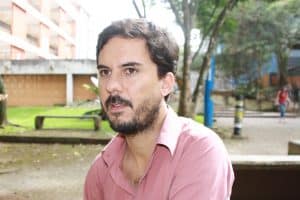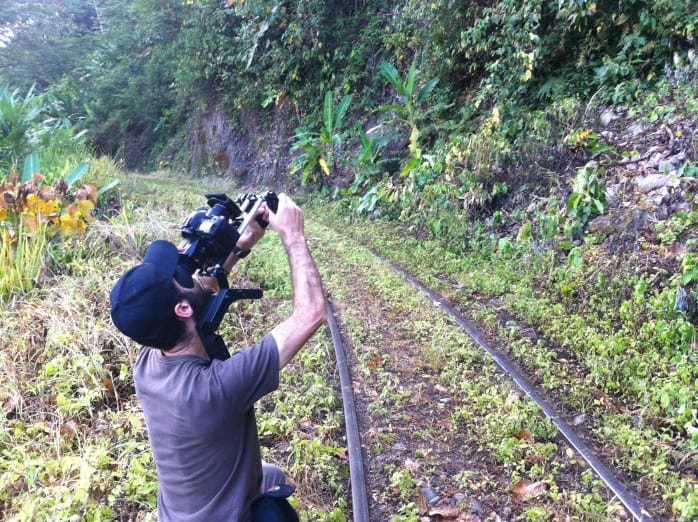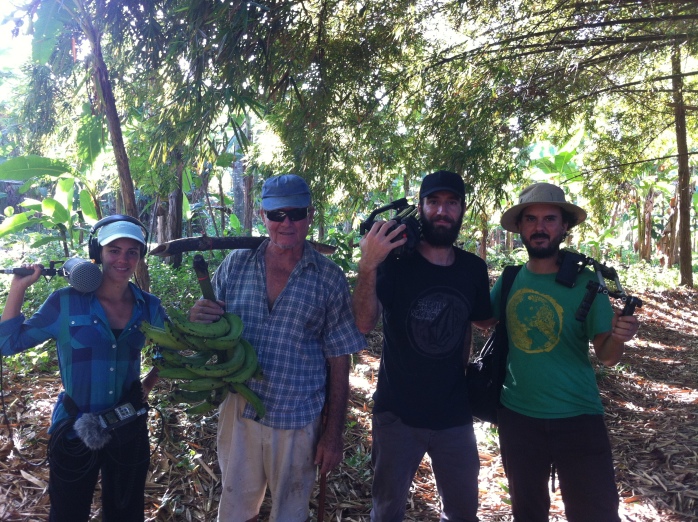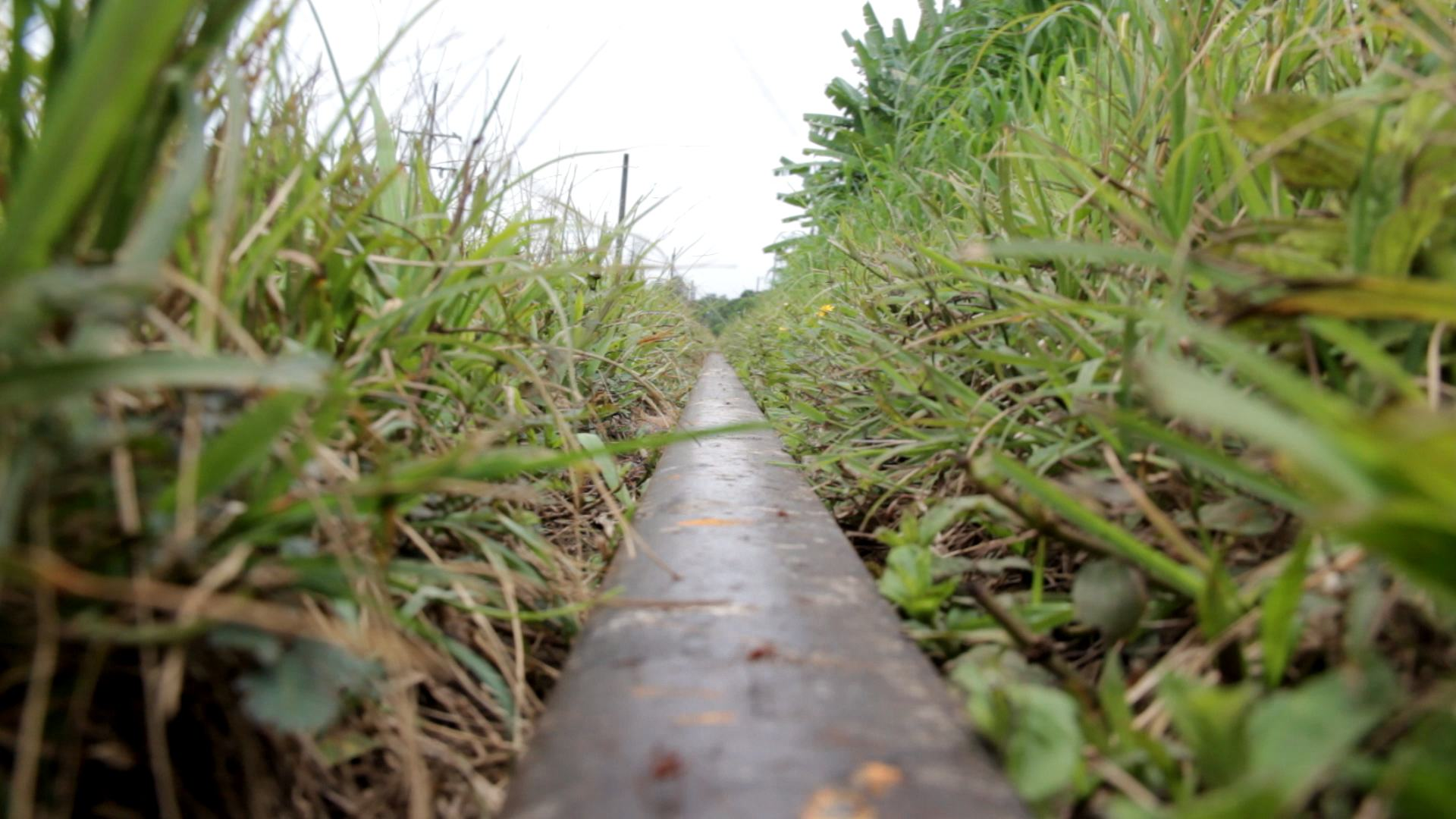The documentary film “El Codo del Diablo” sets out to reveal a hidden history of Costa Rica by revisiting a terrible crime that unfolded in Limón in 1948.
Just weeks after the film’s Nov. 13 premiere, it already has earned accolades, including being named one Central America’s best full-length documentaries at the Festival Ícaro, a Central American film fest held in Guatemala last week.
It will open here on Monday, Dec. 1 at Cine Magaly in downtown San José, at 8:30 p.m.
“El Codo del Diablo” tells the story of Setico, a 12-year-old boy who takes the train from Limón to San José to search for his father, one of six political prisoners executed at a notorious curve along the rail line that stretched from the capital to the Caribbean coast.
On the night of Dec. 19, 1948, six political prisoners from Limón were murdered by a group of soldiers at a place known as “El Codo del Diablo,” or “Devil’s Elbow.” The incident took place after the Civil War of 1948 had ended, and during the administration of the political junta led by José “Don Pepe” Figueres Ferrer.
While the crime was investigated and the perpetrators convicted, none served prison sentences. Instead, they fled the country, aided by authorities. Some historians claim that the role played by high political authorities at the time, such as Gonzalo Facio and Edgar Cardona, was never properly investigated.
The documentary, directed by brothers Antonio and Ernesto Jara, focuses on the human drama of the victims’ family members, particularly their wives and children.
Watch the trailer here:
“El Codo del Diablo” was filmed in the Caribbean port city of Limón, Cieneguita, Siquirres, Estrada, and at the railway bridge over the Matina River. It was produced by Producciones La Pecera and Ceibita Films, with a production crew that included Alejo Crisóstomo, Kattia González, Clea Eppelin and Marcela Esquivel, among others.
The Centro Cultural de España supported the production, along with the Cinergia fund, Melico Salazar Theater’s Proartes program and the Ibermedia program.
The Tico Times recently spoke with historian and co-director Antonio Jara ahead of Monday’s showing. Excerpts follow:
TT: Why do you call this historia oculta, or a history that was intentionally covered up?
AJ: It’s hidden history in the sense that it’s not part of what’s officially remembered when we speak about the processes that Costa Rica lived through in the mid-20th century, particularly the Civil War.

First of all, the Civil War was a complicated political process, and there’s a vision that I think comes across as a bit simplistic about what was at stake. Public opinion sees it as a war seeking elections, and once that was finished, the democratic system was established, the army was abolished, and the country entered into a period of stability. And this is a crime [at El Codo del Diablo] that in one way or another questions that vision, because it happened eight months after the end of the war, when nominally the army didn’t exist anymore. Yet here’s a case of political violence committed by soldiers. And not only is it committed by soldiers, but also a big part of the defense argument is precisely that they are soldiers, that they were following orders, that they should be covered by military exemption, and that a court can’t bring them to trial.
That first element, which doesn’t make sense, is what brought my attention to the case, even before we decided to make a film.
How did you come upon this story?
I first came upon the story while working on my master’s degree here at the university, beginning with the judicial case file. So I wrote an article. That was many years ago, and I’ve been interested in the story ever since. I talked about it with my brother, who is a videographer, and I said I think there’s a good story there for something audio-visual.
How did you find the victims’ family members and obtain their stories?
In some form or another, the official memory was erased for these victims, and the memory of the militant left had converted it into a more collective symbol. But there was still something missing: the people. These six people died. Who were they? Who remembers their lives? Where did they come from? What did they do?
When we began the consulting process with Everardo González, a Mexican documentary filmmaker who has done some interesting projects, he told us, “Bueno, you have to go find out who these people were, and who can tell their story. Go to Limón and ask, ‘Who remembers this?’” So, we started to put the books and the judicial documents aside and go to the actual locations.
First we met with the family of Octavio Saénz, and one of them who has a radio program in Limón had interviewed Federico Picado. Finally, we met Federico Picado, and because it’s Costa Rica, everything began to connect. At the end of the day, people know each other in various ways and we were able to locate the descendants of all the victims little by little. We found family members of all the victims.

In which moment did you decide that this was a story worth telling?
I think it was when we found the family members. In addition to what they told us about their fathers, it was them, their voices, their faces, people who had guarded an experience that had defined them as children, and it didn’t seem as if they could tell their stories until now. That really moved us, and I hope that sentiment comes through in the documentary. That’s what drove us to show it.
How long did this process take?
Well, there was the research of the judicial file that I started years ago, which planted the seed. It was probably three years ago that we sat down and started writing the script.
Are there interesting anecdotes from filming that you’d like to share?
At the very beginning of research we had the intention of looking for the actual [Codo del Diablo] location. The train doesn’t run anymore. But the location is known, including by people who don’t even know about the crime. People who remember the rail line know about it. It was a point of reference because it was a very pronounced curve, the wheels of the train used to screech and the river was here below.
We contacted Freddy Menéndez, who is a militant of Vanguardia Popular and now lives in Bataan. In the 1970s, he was an important leader in the area, so we sought him out. And with Limón, we’re not just talking about the fact that it’s a difficult area with a lot of social and economic problems. That same day we went along the railroad tracks with our gear to film, and our gear isn’t very big, there were several people there stealing train rails and carrying them off. Freddy pulled out a huge machete that he calls “La Conga.” Freddy is 70 years old, but he’s a big guy, and he helped us not only as a guide, but also as a calling card so that we didn’t seem so defenseless.
What really impressed us was the manner in which we physically approached the area. The train line in reality has disappeared, not only because they’ve stolen it, but also because the river has been eroding away the mountain. Right now they’re building a dam, and that has flooded a lot of the area. It really was striking to us that an event that was so important at the time, including it was considered a scandal, simply disappears, and the actual physical location is disappearing, too.
What were some of the biggest obstacles in finishing this project?
Well, some of the family members didn’t want to talk to us. They didn’t personally want to talk about the matter. On the other hand, there was some archival material we would have liked to use, but couldn’t because of the rights.
There was a speech by Óscar Arias in 1988 that really captured what we were trying to say about how that period is remembered. We would’ve liked to use it; it was a very good speech in which he said that in Costa Rica, from 1948 on, a woman would never have to cry for her son because of a soldier with boots, that no one went to jail for what he believed, no one had to flee the country because of political persecution. In reality, what several people were telling us was that they had to flee the country after the crime. Some of their parents were imprisoned for being militantly communist, and the main complaint came from the mothers of those who died. Their testimony is right there in the judicial file.
Why do you think Costa Rica focuses so much on the abolition of the army, yet it denies that this type of political violence occurred?
I think it’s a little bit of a triumphalist way to address the issue. On the surface, I am completely in favor of abolishing the army. I think over time it has been so crucial for the political and institutional development of Costa Rica. It’s not perfect – there are plenty of problems. However, I think that maybe it has become a narrative that’s just a little too heroic. The triumph of Figueres was accompanied by democratization and demilitarization. So, anything doesn’t fit within that narrative, well, it’s better to turn down the volume or say, “that wasn’t important.” Also, there are ways to “normalize” violence, as in saying, “bueno, that was a complicated era,” or “who knows what those people were really involved in,” or “it’s that those people in Limón were really violent.” What this does is transform it into something out of the ordinary, and that’s the easiest way to avoid the question, which is, what exactly was going on at that moment?
The abolition of the army was a political process that had a cost, and that included marginalizing and expelling from the political arena an important group of people. That separation from the political process of organizations of workers and leftist parties was done in an arbitrary and violent manner, and it defined the playing field for politics in Costa Rica for many decades after. In other words, anti-communism becomes part of how politics are viewed in Costa Rica.

What: “El Codo del Diablo”
When: Monday, Dec. 1, 8:30 p.m.
Where: Cine Magaly, San José
More info: https://www.facebook.com/elcododeldiablo








